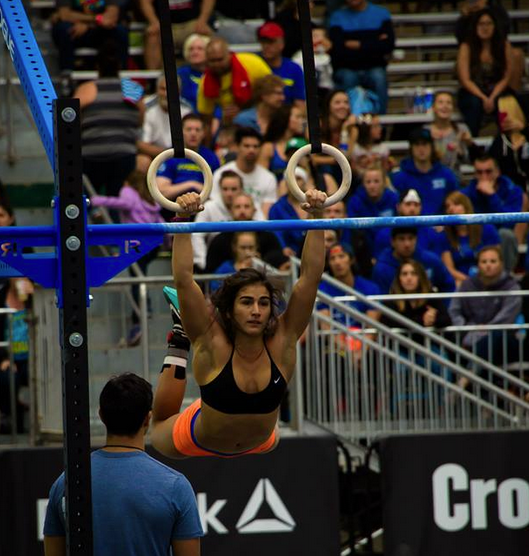What’s What? Modification, Progression, and Substitution
Written by Melissa Hurley
We use the words “modifications“, “progressions” and “substitutions” almost daily in our CrossFit classes.
But are we actually using the terms correctly?
Do you know the difference between modifying a movement, giving progressions or substituting? A workout may need to be modified to include less rounds or reps for our new members. We should be teaching progressions so our members can learn the steps to reach their goals. When someone is injured, they need a substitution. Let’s see how Webster defines each term:
Modify – to change some parts of (something) while not changing other parts; to make minor changes in.
Progression – the process of developing over a period of time, a continuous and connected series of actions, events, etc. A continuous and connected series.
Substitution – the act of substituting or replacing one person or thing with another.
Do you ever get any of these three words mixed up? For me it can be easy to interchange these without giving it a second thought. However, as similar the definitions might seem, it is important that we use the correct terms according to our members’ needs.
When modifying a workout, what are your reasons? The CrossFit word that is often used for modifying is “scaling” or “changing a part of the workout” without changing the whole focus or intent. A new member might need to scale a workout by decreasing the rounds from five to three so that they can stay within the time domain desired for that particular workout. It shouldn’t be cool to finish twenty minutes later than everyone else while doing something as prescribed (or “RX”). Scaling load and intensity are important. You can also modify or scale the weight, time frame (for AMRAPs), distance of a run or row, or even change the problem movement to something else entirely. Modifications are typically made in the conditioning portion of workouts – a minor change is taking place to help the member achieve success.
To me, the easiest yet most complex of these three words is progression. We build out progressions for people to get their first muscle-up, handstand push-up, snatch, toes to bar, etc. Progressions are building blocks to help develop a skill over a period of time. A progression should be continuous and help clients connect the dots when reaching for their goal.
For example, you have a client who wants to get their first pull-up. Start off with some ring rows to focus on a solid back pull. Move forward to a seated barbell pull-up, creating the same pull angle as a pull-up. You can also use negative pull-ups during both these phases to help develop strength. I like to move forward with partner assisted pull-ups before a band if possible, providing help only during the sticking phase (which varies from person to person). Continue building in reps and challenges helping the client eventually progress to a pull-up. Progressions are best used during the strength portions of workouts when slow and controlled is the focus. They typically shouldn’t be used in a workout for time or a conditioning portion; modifications and substitutions are best suited for that.
Substitution normally takes place when an injury is present limiting an athlete, or if a new athlete is unable to perform a movement like pull-ups. A substitute movement would replace a movement that the injured or beginner athlete can’t perform. If you have a client who can’t do double-unders because they have plantar fasciitis or just started last week and have never jumped rope, you might substitute that movement with rowing or the assault bike.
A substitution ideally keeps the same focus. For instance, in our example of double-unders, this movement is a monostructural exercise (cardio) just as rowing, biking, running, etc. We’re keeping the same intention behind the movement, which is getting our client’s heart rate up. If the focus is pushing, pulling, hip hinging, etc, try to substitute a movement that keeps that particular focus.
If I gave you a workout and three different members to complete that workout, one just graduated from fundamentals, another’s desire is to do competitions, and the last member is rehabbing a shoulder injury, could you tell me who needs what?
Coaching takes practice and continual learning. Grow your tool box by learning every way to help your clients.

Late to the party, but if substituting double-unders for a row, run or bike, how would you scale calories and distance? For example, how many double-unders would 1 calorie or 100m be? Thanks, and I hope this is seen and answered!
anybody willing to help with an answer to this one?????
Thanks, Ally. Curious to find out!
Like the way Invictus substituted Bryce with Rasmus because he didn’t make the games as an individual?
Do you have a video of what a seated barbell pull up looks like?
Thanks for the great article.
I think what is meant by the seated barbell pull-up is setting the j-cups for a lifting station at about chest height and placing a barbell across the J-cups, then using the barbell as the pull-up bar. BE CAREFUL to set up slightly inside the rig facing out so that the athlete is pulling the bar towards the rig and not away. If they are pulling away from the rig, the bar could come off the J-cups. The adjustable height pull-up bars from Rogue work really well for this too and you do not have to worry about the barbell… Read more »
I get one to you Marcus. What is a good email address?
marcus.a.wallace@gmail.com would work great! Thanks